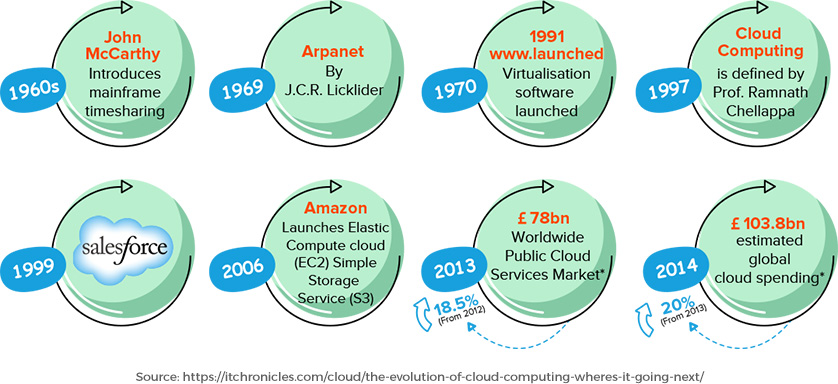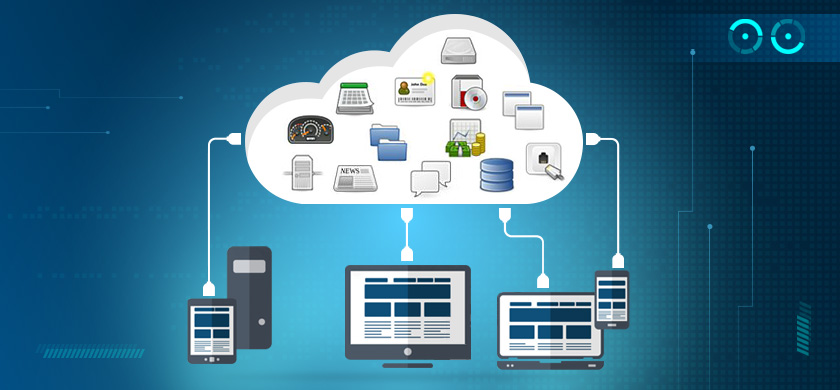Cloud computing technology is increasingly necessary and integral to the success of businesses in the emerging virtual era. As business models are data-centric now more than in recent years, and the scope of cloud data management is evolving, the cloud is acting as a bridge for organizations to use data for fast innovation so that everyone in the organization can work flexibly and continue to innovate. Cloud computing platforms act as a foundation for organizations to improve their existing architectures and infrastructures. Cloud data management techniques and a robust data management system are accelerating digital transformation and facilitating virtual work environments.
Data Entry Outsourced (DEO) provides accurate online data entry and data processing services to support businesses in their data management processes and database management system with the clarity and consistency of high quality, clean data that can accelerate delivery of cloud computing services and applications.
How Cloud Technology Evolved
In 1959, Professor John McCarthy joined the faculty at MIT and began to explore alternatives to the prevailing programming and data management practice — punching a deck of cards and then waiting several days for the computer center to process punch cards. McCarthy’s suggested approach — connecting faculty teletypewriters directly to the central computer — was the beginning of computer methods that involved interactivity, networking, and time-sharing.

The next big technological leap did not occur for 30 years when Ian Foster, Carl Kesselman, and Steve Tuecke advanced the idea of grid computing — sharing of computing resources. Since 1995, large companies such as Salesforce.com have helped to make cloud computing available via websites through such innovations as Platform as a Service — PaaS.
How Data Management Evolved
The history of data management can be traced back to approximately 5,000 years with Sumerian texts that recorded trade activities. Automated data processing did not appear until about 1800 — fabric with patterns resembling punched cards produced by the Jacquard Loom. The US Census first incorporated punch-card technology in 1890.
IBM began supplying unit recording equipment to business and government clients around 1915. Bigger leaps forward occurred between 1978 and 1985 — VisiCalc by Dan Bricklin and Microsoft Excel 1.0 were leading examples of new approaches.
Today’s data management services and data management platform has evolved to include multiple varieties of information encompassing sound recordings, images, and new data formats. Data management includes capturing, managing, storing, visualizing, and analyzing multiple forms of information.
Impact of Cloud Computing Over Data Management
Cloud computing services are giving organizations the freedom and agility to innovate by reducing the complexity of technological environments, allowing people to focus on solutions that empower the organization.

- Improve Productivity Developers and business management can access data quickly and efficiently. This provides employees with the capabilities to work on their projects without the complexities of complicated infrastructure, facilitating greater creativity and collaboration.
- Better Data Availability Cloud helps employees access the data and projects that they need, when they need it, wherever they are located in the world. In a world that is increasingly reliant on digital remote work, having immediate access to data supports seamless data retrieval and sustainability across the organization.
- Expanded Automation Robotic Process Automation (RPA) helps improve data integration such as collection, migration, cleansing, and extraction, which can improve cloud computing security, optimize employee talent, improve data quality, and helps to overall manage workloads.
- Committed Sustainability Organizations that are bound to setting sustainability standards, reduce their carbon footprint, and improve the environment turn to cloud data management solutions. Not only does this help remote work scenarios and minimize employee commuting, but it also reduces data center resources.
Data Management Services on the Cloud
Businesses rely on the flexibility and agility that cloud service offerings provide to support big data management initiatives. Data management in cloud computing is a path many businesses are taking moving into the future:
- Platform as a Service (PaaS) Provides platforms on which software development can occur (Red Hat’s OpenShift and Google’s App Engine).
- Software as a Service (SaaS) The largest cloud market (Salesforce, Office 365, and Google Drive), SaaS solutions are increasingly becoming a primarily dedicated service solution for organizations and vendor-provided service solutions.
- Data as a Service (DaaS) Serving today’s customers best means providing data on demand, regardless of location.
- Infrastructure as a Service (IaaS) The building blocks for cloud services are scalable and use automated computing resources such as Rackspace and Windows Azure.
- Storage as a Service (STaaS) Involves renting storage space to smaller companies or purchasing storage space without having to use and maintain an internal storage infrastructure.
- Network as a Service (NaaS) Cloud computing providers offer virtual network services such as bandwidth on demand and security firewalls for client network access.
Many small businesses and multinational companies have switched from on-premises software to cloud data management tools and technologies.
Benefits of Cloud Computing for Business
For companies of all sizes, there are five significant benefits that can be realized when executing data management with cloud technology. Here are some cloud data management trends:

- Faster Data Accessibility Drives faster responsiveness to any business circumstance, empowers users, and increases the ability to access applications and workloads.
- Scalable Storage Easily scale storage capabilities up or down at any time.
- Cost Efficiency Reduce operational costs as employees can access and complete work quickly.
- Real-Time Reporting Real-time data access gives everyone the information they need when they need it and keeps everyone consistently up to date on workloads.
- Flexible Upgrades Upgrades can be made automatically in the cloud to ensure everyone is working on the same project versions.
Two potential disadvantages due to the use of cloud technology— data breach issues and interruption of internet connectivity — can be overcome with the aid of data management experts such as Data Entry Outsourced.
The Future of Cloud Computing
The momentum for the further evolution of cloud technology is strong. According to estimates provided by Cisco, data “in the cloud” will grow from 1.7 Exabyte (2012) to 20 Exabytes in a five-year period. The newest software is now built for cloud computing — Global Technology Outlook predicts that 25 percent of all applications will be cloud-based by 2016. Gartner projects that 50 percent of companies will have hybrid data management clouds by 2017. A recent (2014) survey by Northbridge revealed a 500-percent increase in SaaS adoption — leading departments were front office, sales, and marketing, customer service, and analytics.
With results like these, the “handwriting is on the wall” — your company should include cloud computing in its future in order to cut costs, remain competitive and thrive in an increasingly data-based business world.
Data Entry Outsourced can help you shorten the learning curve and avoid common mistakes when you combine data management and cloud computing. Please contact us to avail of our experience-laced services, including data conversion, CRM data entry, eCommerce data entry, and more.
-Data Entry Outsourced




